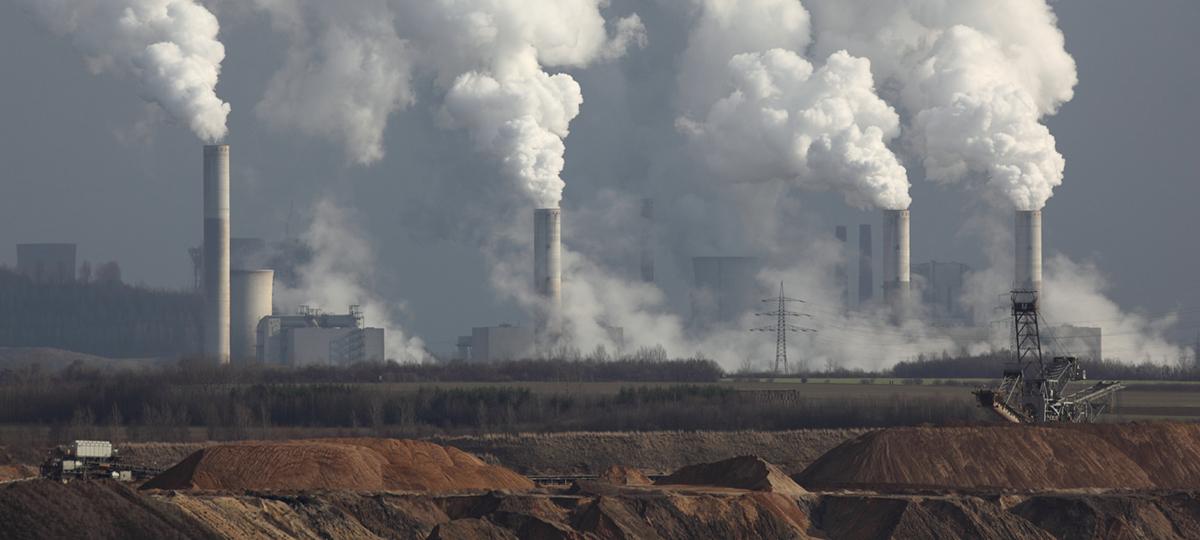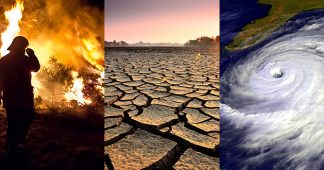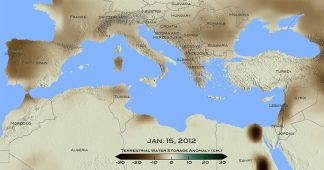Scientists know that certain gases trap heat and act like a blanket to warm the planet. One of the most important is carbon dioxide (CO2), which we release into the atmosphere when we burn fossil fuels — oil, coal, and natural gas — to generate electricity, power our vehicles, and heat our homes.
As we overload our atmosphere with carbon dioxide, more and more heat is trapped — and Earth steadily warms up in response. How do we know? The scientific evidence is overwhelming.
The planet’s temperature is rising

Trends in temperature readings from around the world show that global warming is taking place.
Every one of the past 40 years has been warmer than the 20th century average. 2016 was the hottest year on record. The 12 warmest years on record have all occurred since 1998.
Over the past 130 years, the global average temperature has increased 1.5 degrees Fahrenheit, with more than half of that increase occurring over only the past 35 years. The pattern is unmistakable: Every one of the past 40 years has been warmer than the 20th century average. 2016 was the hottest year on record. The 12 warmest years on record have all occurred since 1998.
Learn more: The Planet’s Temperature Is Rising
Carbon dioxide levels are increasing in the atmosphere

Photo: Nicholas A. Tonelli/Flickr
Detailed measurements of atmospheric carbon dioxide (CO2) levels have been taken continuously for more than 50 years. The data show that CO2 levels have steadily increased every year. Today they are 25 percent higher than in 1957.
What’s more, scientists have detailed records of past CO2 levels from ice core studies, which show that CO2 levels are higher today than at any point since our distant ancestors began migrating out of Africa 800,000 years ago.
Increased CO2 is the primary driver of global warming

CO2 absorbs heat reflected from the Earth’s surface — heat that would otherwise pass freely into space. The CO2 then releases that heat, warming the Earth’s atmosphere.
As CO2 levels increase, the pace of warming accelerates. Satellite measurements confirm that less heat is escaping the atmosphere today than 40 years ago. Though other heat-trapping gases also play a role, CO2 is the primary contributor to global warming.
The climate has changed many times in the geologic past due to natural causes — including volcanic activity, changes in the sun’s intensity, fluctuations in Earth’s orbit, and other factors — but none of these can account for the current rise in global temperatures.
Learn more:
We are responsible for the increase in CO2

Photo: alohaspirit/iStock
Scientists can conclusively identify that human activity is responsible for the observed increase in CO2. How? The carbon dioxide emitted by burning coal, natural gas, and oil has a unique chemical “fingerprint” — and the additional CO2 in the atmosphere bears that signature.
Learn more:
An overwhelming majority of scientists agree

Scientific societies and scientists have released numerous statements and studies showing the overwhelming consensus that global warming is happening and that human activity is the primary cause.
Learn more:Scientists Agree Human-caused Climate Change is Real (The Equation)
The consequences of rising temperatures

Global warming has serious implications for our health, environment, and economy. Dangerous heat waves are increasing in severity and frequency. Sea level rise is accelerating. Extreme storms are on the rise in some areas. More severe droughts are occurring in others. Collectively, these effects pose a threat to the entire planet — including you, your community, and your family.
Learn more: Global Warming Impacts
The National Climate Assessment
 Image: Greg Shirah
Image: Greg ShirahProduced on a regular basis by the U.S. Global Change Research Program, the National Climate Assessment provides a comprehensive assessment of the current understanding of climate change science, including an overview of likely impacts in the United States on a region-by-region basis.
The IPCC
The Intergovernmental Panel on Climate Change (IPCC) was established in 1988 by the World Meteorological Organization and the United Nations Environment Programme. Through the IPCC, climate experts from around the world synthesize the most recent climate science findings every five to seven years and present their report to the world’s political leaders. The IPCC’s Fourth Assessment was released in 2007. The most recent Fifth Assessment was released as a series of working group reports beginning in fall 2013.
Understanding climate science

Scientists use certain terms to describe how well something is known, which can lead to confusion about important scientific findings on global warming. Knowing this terminology is key to understanding what is known about climate change.
Learn more: Certainty vs. Uncertainty: Understanding Scientific Terms About Climate Change
Climate scientists in action

Discover how the work of 15 climate scientists is helping to educate the public about the overwhelming scientific evidence for human-caused global warming.











